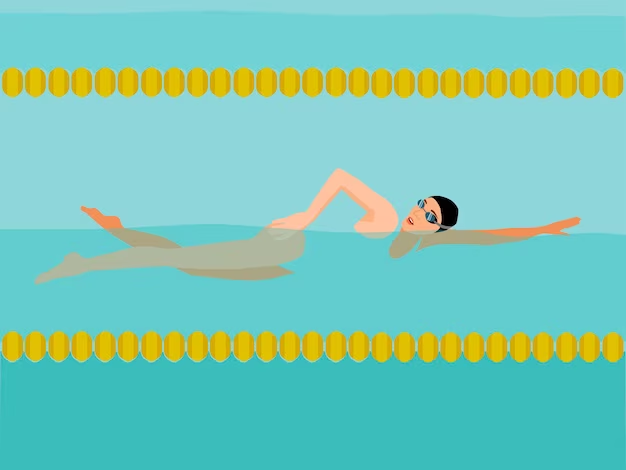Back
Is Swimming Good For Your Pelvic Floor?
By Shannon Strauch, PTA, STMT-1 on 2/1/2024

Swimming can be a beneficial form of exercise for many individuals, including those seeking pelvic floor therapy. The pelvic floor consists of muscles, ligaments, and connective tissues that support the bladder, uterus, and rectum. Pelvic floor therapy aims to address issues such as pelvic pain, incontinence, and pelvic organ prolapse.
Many people may be unsure if swimming is beneficial when dealing with pelvic floor dysfunctions, but here are a few reasons why you should absolutely be grabbing your swimsuit:
Low-Impact Exercise:
Swimming is a low-impact exercise that reduces stress on joints and muscles. This can be particularly advantageous for individuals with pelvic floor issues, as high-impact exercises may exacerbate symptoms like prolapse, stress incontinence, or pelvic pain.Buoyancy:
The buoyancy of water supports the body, reducing the impact of gravity on the pelvic floor. This can help individuals with pelvic floor dysfunction perform exercises with less strain on these muscles affecting prolapse or incontinence.Increased Blood Circulation:
Swimming promotes blood circulation throughout the body, including the pelvic region. Improved circulation can contribute to the healing process and reduce inflammation.Whole-Body Exercise:
Swimming engages multiple muscle groups, promoting overall strength and endurance. A strong overall musculature, including the core muscles, can indirectly benefit the pelvic floor by providing additional support to the pelvic organs.Breathing Techniques:
Proper breathing techniques during swimming can also indirectly benefit the pelvic floor. Focused breathing can engage the diaphragm and help stabilize the core, which is connected to the pelvic floor.
Swimming can also be beneficial during pregnancy. Some women can end up dealing with pelvic pain, back pain, pelvic organ prolapse, incontinence, or diastasis recti.

Benefits of Swimming During Pregnancy:
Low-Impact Exercise:
Swimming is a low-impact exercise that is gentle on the joints. This can be particularly beneficial during pregnancy when the joints may be under increased stress.Reduced Swelling:
The buoyancy of water helps reduce swelling in the feet and ankles, which is a common issue during pregnancy.Cardiovascular Fitness:
Swimming is an excellent cardiovascular exercise that helps maintain and improve overall fitness without putting excessive strain on the body.Improved Circulation:
The water pressure can aid in improving blood circulation, which can be beneficial during pregnancy.Reduced Back Pain:
The buoyancy of water can alleviate pressure on the spine, potentially reducing back pain that is common in pregnancy.Temperature Regulation:
Swimming in a pool allows for better temperature regulation, preventing overheating, which is crucial during pregnancy.
Pelvic floor therapy may involve exercises targeted at strengthening or relaxing specific pelvic floor muscles, biofeedback, and lifestyle modifications. A trained therapist can assess your individual needs and provide personalized recommendations for incorporating swimming or other exercises into your pelvic floor rehabilitation program. Always communicate openly with your healthcare provider about any concerns or symptoms you may be experiencing.
Read More:
How Chronic Pelvic Congestion in Men Contributes to Prostatitis By Shannon Strauch, PTA, STMT-1 on 12/11/2024 How lymphatic issues can cause symptoms of prostatitis Prostatitis and Tight Pelvic Floor Muscles: A Comprehensive Guide By Shannon Strauch, PTA, STMT-1 on 12/10/2024 How a tight pelvic floor can be the reason for prostatitis symptoms
Are you ready to live pain free?
Request An Appointment